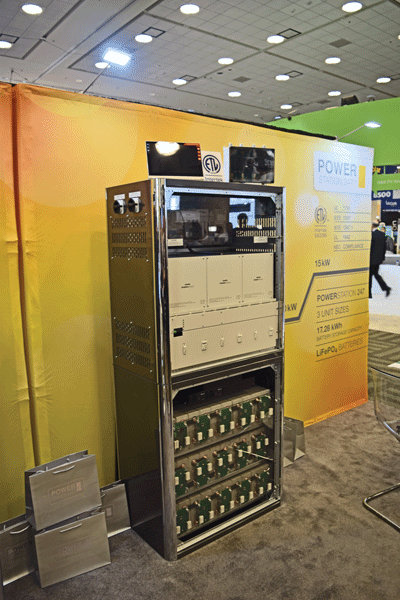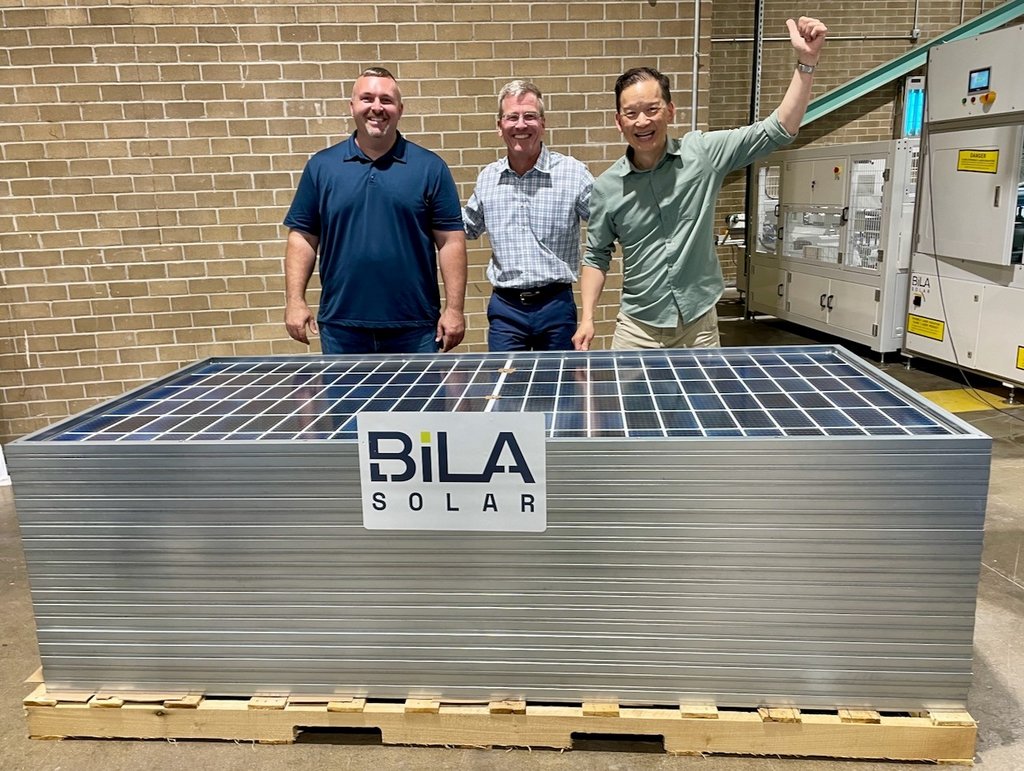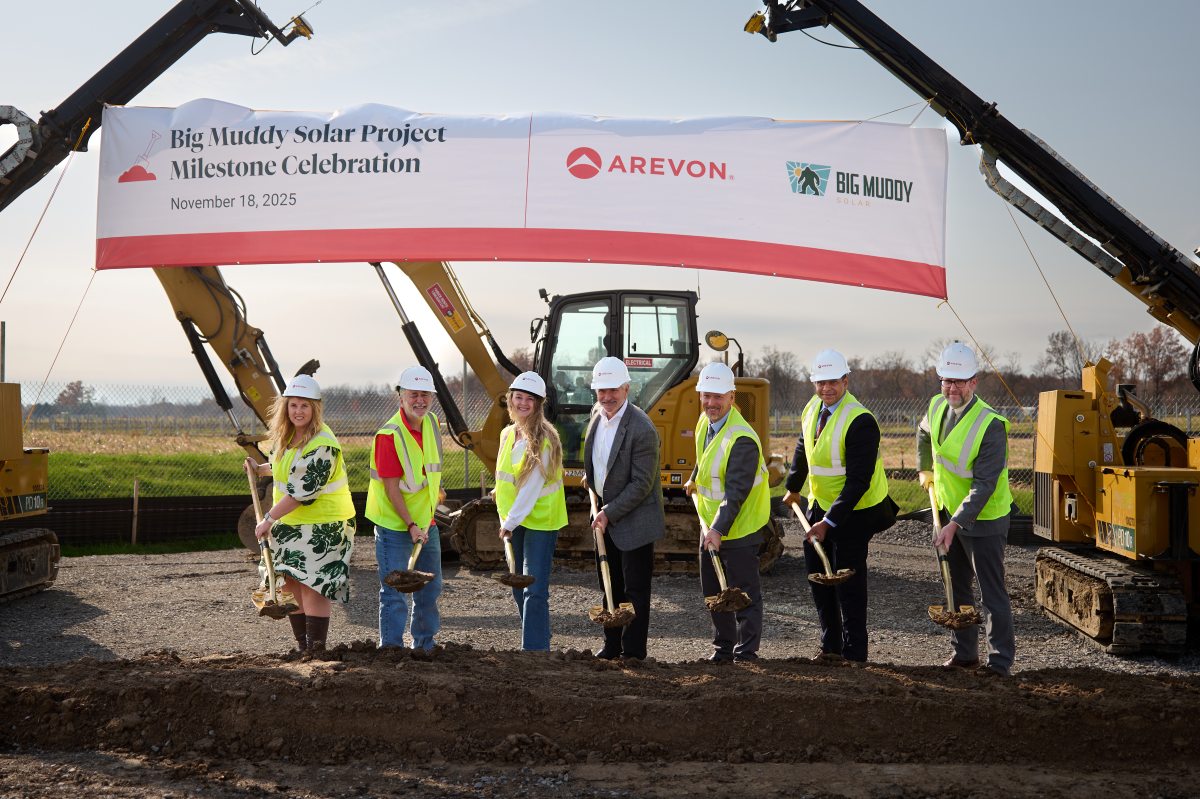All-In-One: All of your solar-plus-storage needs built into one cabinet
 The second level exhibit hall at Intersolar in San Francisco (there are three floors total) is dedicated to balance of systems technology, and in 2016, that means the floor was almost entirely made up of energy storage systems as everyone readies for the solar-plus-storage dam to break. Or at least it seemed that way.
The second level exhibit hall at Intersolar in San Francisco (there are three floors total) is dedicated to balance of systems technology, and in 2016, that means the floor was almost entirely made up of energy storage systems as everyone readies for the solar-plus-storage dam to break. Or at least it seemed that way.
One of the newest systems to debut this year caught our eye — POWERSTATION 247 by Concept by US — and its debut was a long time in the making. The company officially incorporated in Florida in 2012, but the leadership team had been doing solar work in Germany for 15 years previously. The goal of founder Uwe Corbach was to take the German home energy management philosophy to the United States market.
“We wanted to give the end consumer control of their solar energy; we didn’t like how panels were being installed and then you couldn’t use that energy in your house,” says Sara Kissing, VP and COO.
The outcome was an all-in-one solar-plus-storage solution, the POWERSTATION 247, the guts of which (other than the batteries) was completely created by Concept by US.
So what happened in between 2012 and this mid-2016 launch? Research and development and certifications. You can’t just devise a product like this, with all of these new patents, and put it on the market without clearing a few hurdles first. The process for Concept by US took longer than anticipated because of everything it baked into the product.
“We were told it would take six to nine weeks for UL approval but it took 18 months. Now we finally understood why so many big players in Germany didn’t put a product out here because of the requirements,” Kissing says.
Intertek informed them that they were setting new standards, which required more research. The system underwent 1,500 tests, and ultimately there was no standard to do the testing for the power module that sits at the heart of the POWERSTATION 247.
So, what is it?
The POWERSTATION 247 is a fully integrated, scalable system in 5- 10- or 15-kW system sizes that can integrate up to three hybrid inverters, solar MPP trackers, charge controller and batteries as well as all of the necessary field wiring terminals and disconnect switches — all within the exact same cabinet. Also inside the POWERSTATION 247 cabinet: AC transfer switches, PV connection, grid disconnect, air cooling, battery fuses, battery management, battery disconnect and the battery bank.
The power module is the patent-pending secret sauce that makes the plug-and-play system possible. These 5-kW power modules integrate four circuit boards and more than 1,000 components that add up to a hybrid inverter, dual MPP tracker, battery charger and islanding device all in one. If you need more power, you simply add another power module, with a total of three (15 kW total) fitting inside one POWERSTATION 247 cabinet.
Concept by US incorporated lithium-iron batteries from outside vendors, but the system is battery agnostic. The battery bank in the cabinet is sized for 17.28 kWh storage capacity. Need more storage? Add another cabinet.
“It is expandable,” Kissing says. “If someone wants more power, they can scale up. If they want more battery storage, they can add another cabinet for 34-kWh storage. It’s a modular architecture we have created.”
Kissing says with all that is included, the POWERSTATION 247 is about 20 percent less expensive when sizing a comparable system with the same power, like the Tesla Powerwall.
As for its rapid shutdown capabilities, those regulations weren’t in place when the product was being developed. The disconnect was inside the system, but now with rapid system shutdown requirements needing to be met outside the home, there is an additional box that will need to be installed. Concept by US has created the RAPIDSAFE 247, again a plug-and-play solution with features like: PV rapid shutdown function, PV arc fault protection and ground fault detector interrupter function. But as those requirements evolve again in 2017, Concept by US will be evolving along with them.
How do you use it?
Every residential project is different. Some customers want to go off-grid (as much as they can at least) and some may just want a battery backup, and the POWERSTATION 247 is designed to accommodate them all.
Operation of the energy management system can be managed by the homeowner and adjusted as priorities change. The POWERSTATION 247 requires internet access, which allows system owners to monitor battery life and how much energy the PV is generating in one easy to use interface.
Kissing says they prefer lithium-iron because it provides more charge and discharge cycles. The POWERSTATION 247 will get up to 5,000 charge/discharge cycles and manage things so the batteries never fully discharge.
Right now, the system only carries a 10-year warranty, with plans to expand it down the road.
Why install it?
Concept by US has tried to simplify things not just for the homeowner, but for the installer as well, providing training and detailed marketing materials. Installation of a POWERSTATION 247 should only take two to three hours and be fairly straightforward considering all that’s built-in.
The next chapter of the solar industry will be tied to how seamlessly storage can be incorporated, and fully integrated systems like the POWERSTATION 247 should be kept in mind as options for your
customers.



